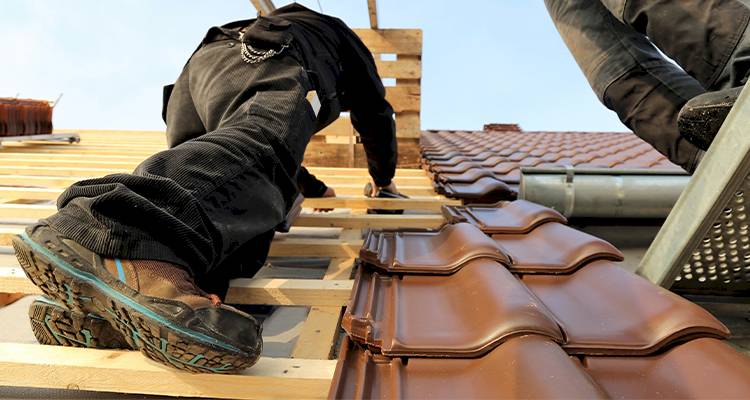Collapsed Drain Repair Cost
- The average cost to repair a drain line breakage is around £850
- The job will take approximately 1 - 2 days to complete
- A complete pricing breakdown which includes things to consider when repairing a drain line, along with what such a task usually involves
- How long the job should approximately take and a general overview of what kind of jobs can be performed
- How to find and hire a drainage specialist
Does your drain need repairing? Want to know how much it'll cost?
Here, in this complete cost guide, we look at all the costs and fees included in drainage pipe repairs and how to deal with a collapsed drain.
Are you in need of a quote?
Then look no further! We have a wide range of drainage specialists ready to offer you a free quote!
A collapsed drain repair job is likely to cost you around £850, on average.
So, if you have a drain problem, check out the guide below for more information!

£850
Table of Contents
How Much is it to Repair a Collapsed Drain?
Cracked or damaged drain lines can be a nightmare for any homeowner and can be a much more serious problem than some people may think. Drain lines transport the wastewater from your property to sewer pipes that run beneath the ground, which is then transported to a water treatment plant.
The effects of drain damage can lead to damage to your own property, the more serious of which will be dampness and mould. Dampness and mould can lead to the rotting of any timber in your home, lead to cracks in your floors or walls as well as any plastering which will cause you to spend much more money on repairs down the line.
It is usually quite easy to tell if you have a drain breakage as most damp will be localised to a certain spot, so if you notice localised dampness, then it is likely you have a damaged drain pipe. Another quite obvious and clear sign of drain damage is the smell of sewage or rotting food coming from your sink drains or even your toilet.
If your drain damage is minimal, then it may be a simple fix for many DIY enthusiasts, and may only take a couple of hours to repair.
However, in some more serious instances, you will have to call in a specialist tradesman or company, as you will need to hire someone to locate the breakage, excavate the earth surrounding the pipes and then repair or replace the pipes.
Follow the simple steps on MyJobQuote to receive quotes from three local tradesmen for the job.
Could relaying my drain line improve the way it drains? I'm always having problems with it but there's no visible damage.
Collapsed Drain Repair Prices
| Job Description | Duration | Material Cost | Labour Cost |
|---|---|---|---|
| DIY repair using 1 foot PVC pipe and a pair of couplings | 1 Day | £50 | — |
| CCTV Drain Survey | 1 Day | — | £100-£250 |
| Drain line breakage repair – minimal cracks | 1 Day | £50 | £160 |
| Drain line breakage repair – leaks | 1-2 Days | £400-£600 | £200-£500 |
| Relocating drain from main sewage supply | 7 Days | £2,700 | £1,800 |
Things to Consider When Repairing a Drain Line Breakage
A drain line breakage is something you will need to tackle right away, as the longer it is left with no action taken, the more damage it can cause to your property.
So, even if you only suspect damage or a leak without being too confident, it is best to call someone in to check for any such damages. Because the drain line runs beneath the ground, it will not be obvious to you that you have one. There are a few things to look out for that will help you spot any damage before it has a chance to cause some serious damage to your home.
First of all, is to look out for any damp spots or mould growth on your walls or your floors – if a drain is cracked or damaged in some way, it is obviously going to leak water which will be the cause of any dampness in your home. In extreme cases, you may experience some cracks in your walls or flooring.
However, as I have said, this is in the most extreme cases where the problem hasn’t been dealt with for a good number of years. You may also notice a patch of ground outside your home is sunken or quite damp, this is a sign of leakage from a drain pipe. Smells of foul odours such as sewage or rotting food may also be present in and around your home.
If you suspect you have drain damage, then your options are to inspect it yourself or to hire a drainage company or emergency plumber to take a look at the drain pipe itself.
If you are confident enough in your DIY skills, then all you will need to do is dig around the area of the drain pipe and inspect it for yourself. If not, then you can hire a drainage company or plumber to come out and carry out an inspection.
They will carry out what is known as a CCTV drainage inspection, which makes the use of state of the art camera technology to inspect your drains and detect any damage or other problems.
Doing it Yourself
Repairing drain damage can be done by most DIY enthusiasts, especially if the damage is minimal and easily accessible. If the damage does seem to be more than you can handle, or if you do not possess the necessary knowledge or skills to repair the damage, then it is always best to hire a specialist to carry out the job.
You don’t want to cause more damage than what is already there, and thus ending up with more costly repairs to tackle. Another option is to go through your building insurance if the policy covers drainage damage.
Fortunately, you should not need to gain any permission to carry out any repairs on drains that are within your property. However, if you are unsure, it is always advised to go to your local authority for confirmation.
First of all, you will need to locate the damaged drain pipe and dig around the area to access it. You will likely be able to identify a rough area by looking for any wet patches or sunken ground, as these are the areas where water is likely to leak, leading to these effects.
Once you have found an obvious patch of ground, start digging carefully, so not to damage the pipes even more. Dig enough earth from around the pipe and underneath, so that the whole pipe is accessible to carry out a full and effective repair.
Once you have unearthed the pipe and located the damage, you will need to cut through the pipe on either side of the crack. Ideally, this should be about two inches either side, but the overall aim is to go for a clean cut on both ends so there aren’t any cracks on the remaining pipe.
You will need suitable cutting instruments depending on the material of the pipe, for example for a clay pipe you may need to use a hacksaw. For an iron pipe, you will need to use a saw with a metal blade, as a hacksaw will be far too time-consuming.
You will then need to measure and cut out a piece of PVC pipe to replace the part you have cut out. Attach the piece of PVC pipe to the drain pipe by using flexible rubber couplings on either side of the existing pipe.
Thankfully, the diameter of the replacement and the original piping doesn’t have to be spot on, as you can purchase couplings that have different diameters at both ends. Couplings are also not expensive at all, costing you £20 to £30 at most for a decent pair.
After repairing the pipe, it is time to fill the hole back in. It is best advised to first fill in the area around the drain pipe with fine gravel, as this will add support, and then fill in the rest with soil and earth.
Checklist for Repairing a Drain Line Breakage
- Look for obvious signs of drain pipe damage such as dampness or mould in your property.
- For signs of drain damage outside the property - look for patches of wet or sunken ground. As this is an obvious sign of leakage.
- Minimal drain line breakages can be easily fixed by most DIY enthusiasts.
- Tackle the problem as soon as you can, as it can lead to more damage and more costs further along.
FAQs
How can identify if I have damaged drain pipes?
Is there a way to find out for certain if I have a drain line breakage?
Do I need permission to repair a drain line breakage?
What causes damages to drain pipes?
More natural reasons such as movement of the earth and erosion, intrusive nearby tree roots and the fact that most drain pipes are quite old by now, and simply need the repair work.









